- You are here:
- Home »
- Indoor Plants
- » Variegated Natal Ivy Care Guide
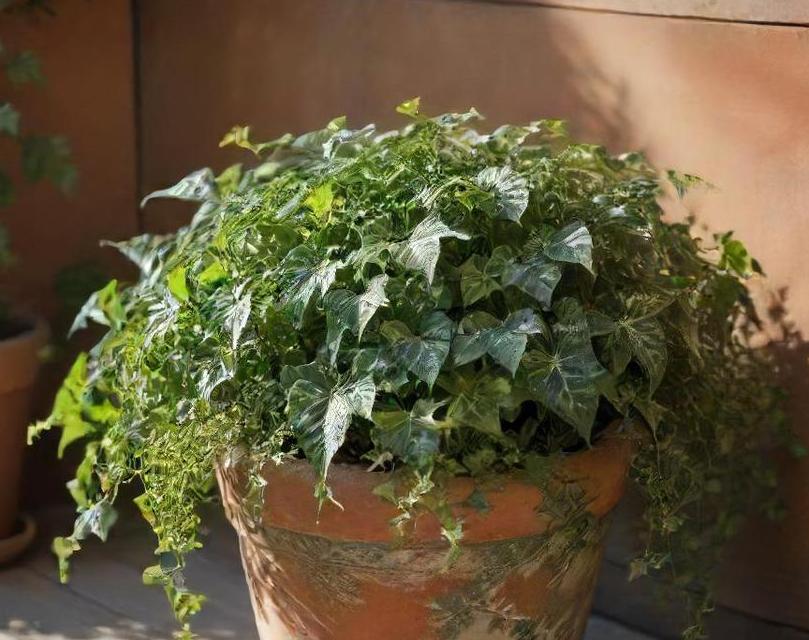
Variegated Natal Ivy Care Guide
Indoor plants have become more than just decorations; they’ve evolved into essential components of interior design, offering aesthetic appeal along with numerous health benefits. Among the plethora of indoor plant options, variegated Natal Ivy stands out for its lush foliage and easy-care nature. In this comprehensive guide, we delve into the world of variegated Natal Ivy, exploring its botanical characteristics, historical and cultural significance, common names and varieties, and much more.
Contents
- 1 What Is Variegated Natal Ivy?
- 2 Botanical Characteristics
- 3 Historical And Cultural Significance
- 4 Common Names And Varieties
- 5 Light Requirements
- 6 Soil Requirements
- 7 Temperature Requirements
- 8 Humidity Requirements
- 9 Watering Needs For Variegated Natal Ivy
- 10 Fertilization
- 11 How To Plant Variegated Natal Ivy
- 12 Potting
- 13 Pruning Techniques For Variegated Natal Ivy
- 14 Propagation Methods For Variegated Natal Ivy
- 15 Troubleshooting Problems With Planting Variegated Natal Ivy Indoors
- 16 Conclusion
- 17 FAQS
What Is Variegated Natal Ivy?
Variegated Natal Ivy, scientifically known as Dioscorea elephantipes, is a species of succulent vine native to the Eastern Cape and KwaZulu-Natal provinces of South Africa. Despite its common name, it is not a true ivy but rather a member of the Dioscoreaceae family, which includes yams. This plant is prized for its attractive variegated leaves, which feature creamy-white margins contrasting with the deep green center.
Growth Habit And Form
Variegated Natal Ivy is a climbing vine that can reach lengths of up to 10 feet (3 meters) or more when given proper support. Its stems are slender and wiry, allowing it to twine around structures or cascade gracefully from hanging baskets. The leaves are heart-shaped and slightly succulent, adding a touch of elegance to any indoor space.
Environmental Requirements
This plant thrives in bright, indirect light but can tolerate some degree of shade. It prefers well-draining soil with moderate moisture levels and benefits from occasional misting to increase humidity. Variegated Natal Ivy is sensitive to overwatering, so it’s essential to allow the soil to dry out slightly between waterings to prevent root rot.
Maintenance And Care
One of the most appealing aspects of variegated Natal Ivy is its low-maintenance nature. It requires minimal pruning to maintain its shape and can tolerate occasional neglect. However, regular fertilization during the growing season can encourage healthy growth and vibrant foliage. Pest infestations are rare but can be treated with insecticidal soap if necessary.
Botanical Characteristics
Understanding the botanical characteristics of variegated Natal Ivy provides insight into its unique features and growth habits.
Leaves
The most striking feature of variegated Natal Ivy is its foliage. The leaves are typically 2 to 4 inches (5 to 10 centimeters) long and 1 to 2 inches (2.5 to 5 centimeters) wide, with a glossy texture and prominent veining. The creamy-white margins contrast beautifully with the dark green center, creating a visually stunning display.
Flowers
Variegated Natal Ivy occasionally produces small, inconspicuous flowers during the summer months. These flowers are typically greenish-yellow and borne on slender stalks arising from the leaf axils. While not particularly showy, the flowers add a delicate touch to the plant’s overall appearance.
Roots
The roots of variegated Natal Ivy are tuberous and resemble small, irregularly shaped potatoes. These underground structures store water and nutrients, allowing the plant to survive periods of drought. The unique appearance of the roots adds to the plant’s overall charm and intrigue.
Historical And Cultural Significance

Variegated Natal Ivy has a rich history intertwined with cultural significance, making it more than just a decorative plant.
Traditional Uses
In its native habitat, variegated Natal Ivy has been used for various medicinal purposes by indigenous peoples. The tuberous roots contain compounds with potential therapeutic properties, including anti-inflammatory and analgesic effects. While not widely studied, traditional healers have long recognized the plant’s healing potential and continue to utilize it in folk medicine practices.
Symbolism
Like many plants, variegated Natal Ivy has symbolic significance in different cultures. In some African traditions, it is associated with fertility and abundance, with the heart-shaped leaves symbolizing love and affection. Additionally, the vine-like growth habit of the plant represents resilience and adaptability, making it a popular choice for gifts and decorations during celebratory occasions.
Modern Cultivation
In modern times, variegated Natal Ivy has gained popularity as an ornamental plant for indoor spaces worldwide. Its striking foliage and easy-care nature make it a favorite among plant enthusiasts and interior designers alike. From office buildings to residential homes, this versatile plant adds a touch of natural beauty to any environment.
Common Names And Varieties
Variegated Natal Ivy is known by several common names, reflecting its widespread popularity and cultural significance.
English Names
In English-speaking regions, variegated Natal Ivy is commonly referred to as "Variegated Natal Ivy" or simply "Variegated Ivy." These names accurately describe the plant’s origins and distinctive foliage, making them easily recognizable among horticultural enthusiasts.
Afrikaans Names
In South Africa, where the plant is native, variegated Natal Ivy is known by various Afrikaans names, including "Bont Natal-issie" and "Gekleurde Natal-issie." These names highlight the plant’s variegated foliage, with "bont" and "gekleurde" translating to "variegated" or "multi-colored."
Cultivars And Varieties
While variegated Natal Ivy is the most commonly cultivated form, there are several cultivars and varieties available to suit different preferences. These may vary in leaf size, variegation patterns, or growth habits, offering enthusiasts a diverse range of options for their indoor gardens.
Variegated Natal Ivy is a stunning indoor plant with rich botanical characteristics and cultural significance. From its attractive foliage to its historical uses, this plant continues to captivate enthusiasts around the world. Whether grown for its ornamental value or cherished for its symbolic meaning, variegated Natal Ivy adds a touch of natural beauty to any indoor space, enriching the lives of those who cultivate it. With proper care and attention, this charming vine will thrive for years to come, bringing joy and vitality to its surroundings.
Botanical Overview
The Variegated Natal Ivy, scientifically known as Hedera helix ‘Variegata’, is a cultivar of the common English Ivy. Originating from Europe, this cultivar is cherished for its striking foliage characterized by variegated leaves, featuring splashes of cream, white, or yellow amidst deep green hues. Its trailing vines make it an excellent choice for hanging baskets, cascading gracefully over edges, or as a climber when trained on a support structure.
This ivy variety is renowned for its adaptability and resilience, thriving in various indoor conditions. Its low-maintenance nature makes it an ideal choice for both novice and seasoned indoor gardeners. Variegated Natal Ivy is not only aesthetically pleasing but also serves practical purposes, such as improving indoor air quality by filtering out toxins.
- Scientific Name: Hedera helix ‘Variegata’
- Common Name: Variegated Natal Ivy, Variegated English Ivy
- Family: Araliaceae
- Origin: Europe
- Foliage: Variegated leaves with splashes of cream, white, or yellow
- Growth Habit: Trailing vine, suitable for hanging baskets or climbers
Light Requirements
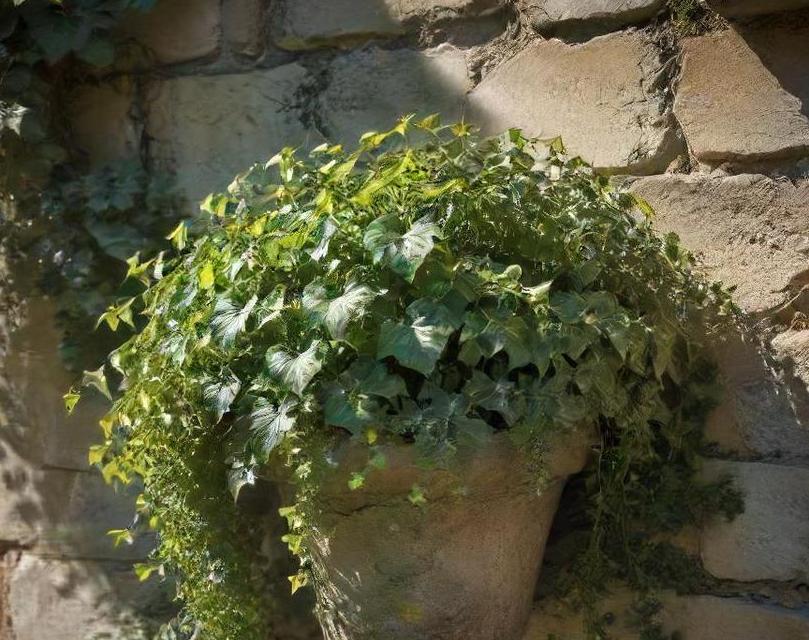
Proper lighting is crucial for the health and vigor of Variegated Natal Ivy. While this ivy cultivar can tolerate low light conditions better than many other plants, it thrives in moderate to bright indirect light. Insufficient light may result in leggy growth with sparse foliage, while excessive light can lead to leaf scorching.
Ideal Lighting Conditions
- Moderate to Bright Indirect Light: Place the plant near a north or east-facing window where it receives gentle sunlight filtered through curtains or blinds.
- Avoid Direct Sunlight: Direct sunlight can scorch the delicate leaves of Variegated Natal Ivy, especially during the intense afternoon hours. If placed near a south or west-facing window, ensure the plant is shielded from direct sun or use sheer curtains to diffuse the light.
Low Light Tolerance
Variegated Natal Ivy exhibits a degree of tolerance to low light conditions, making it suitable for areas with limited natural light. However, prolonged exposure to low light may result in reduced growth and less vibrant foliage. If low light is unavoidable, consider supplementing with artificial grow lights to provide the necessary illumination.
Soil Requirements
Selecting the right soil composition is essential for promoting healthy root growth and overall plant vitality. Variegated Natal Ivy prefers a well-draining potting mix that retains moisture without becoming waterlogged. A balanced soil mixture provides adequate aeration while retaining essential nutrients.
Characteristics Of Ideal Soil
- Well-Draining: Prevents waterlogging and reduces the risk of root rot.
- Loamy Texture: A mixture of peat moss, perlite, and coarse sand promotes optimal drainage while retaining moisture.
- pH Level: Slightly acidic to neutral soil pH ranging between 6.0 to 7.0 is ideal for Variegated Natal Ivy.
Preparing Potting Mix
Create a custom potting mix by combining the following ingredients in the specified ratios:
- 50% peat moss or coco coir: Provides moisture retention.
- 30% perlite: Enhances drainage and aeration.
- 20% coarse sand or vermiculite: Improves soil structure and prevents compaction.
Mix the ingredients thoroughly to ensure uniform distribution of components before potting the Variegated Natal Ivy.
Temperature Requirements
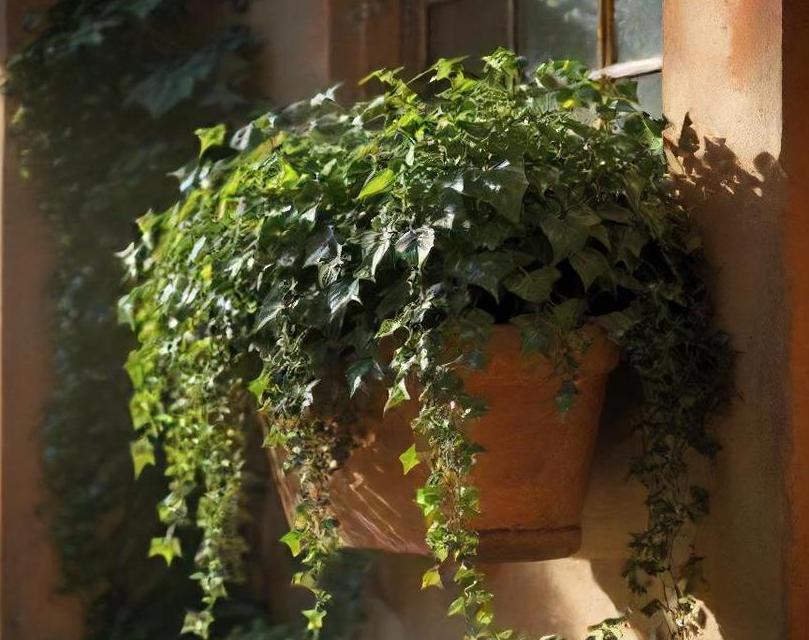
Maintaining suitable temperature levels is crucial for the overall health and growth of Variegated Natal Ivy. While this ivy cultivar is adaptable to a range of temperatures, it thrives in moderate conditions reminiscent of its native habitat.
Optimal Temperature Range
- Daytime Temperature: Ideally between 60°F to 75°F (15°C to 24°C) during the day.
- Nighttime Temperature: Slightly cooler temperatures ranging from 50°F to 65°F (10°C to 18°C) at night.
- Avoid Extreme Temperatures: Protect the plant from sudden temperature fluctuations and drafts, which can stress the plant and affect its growth.
Seasonal Considerations
- Winter Care: During winter, ensure the Variegated Natal Ivy is kept away from cold drafts and heating vents to prevent drying out. Maintain consistent temperatures to avoid temperature shock.
- Summer Protection: Shield the plant from direct exposure to intense sunlight during the peak summer months to prevent leaf scorching. Providing ample humidity can help mitigate the effects of high temperatures.
Humidity Requirements
Variegated Natal Ivy thrives in environments with moderate to high humidity levels, mimicking the conditions of its native habitat. Adequate humidity not only promotes lush foliage growth but also helps prevent issues such as dry leaf edges and spider mite infestations.
Maintaining Humidity Indoors
- Grouping Plants: Grouping multiple plants together can create a microclimate with higher humidity levels through transpiration.
- Humidifiers: Use a room humidifier to maintain optimal humidity levels, especially during the dry winter months when indoor humidity tends to drop.
- Misting: Regularly mist the foliage with room temperature water to increase humidity and prevent dust accumulation on the leaves. Avoid misting excessively, as it can lead to fungal diseases on the foliage.
Pebble Tray Method
The pebble tray method is an effective way to increase ambient humidity around Variegated Natal Ivy plants:
- Place a layer of pebbles or small stones in a shallow tray.
- Add water to the tray, ensuring the water level remains below the surface of the stones.
- Position the potted plant on top of the pebbles, ensuring the bottom of the pot does not touch the water.
- As the water evaporates, it creates a humid microclimate around the plant.
Variegated Natal Ivy, with its enchanting foliage and easy-care nature, is a delightful addition to any indoor space. By understanding its light, soil, temperature, and humidity requirements, you can create an optimal environment for this versatile plant to thrive. Whether adorning a hanging basket or climbing a trellis, the Variegated Natal Ivy brings beauty and vitality to homes, offices, and indoor environments of all kinds. With proper care and attention, this charming ivy cultivar will reward you with its lush growth and elegant presence for years to come.
Watering Needs For Variegated Natal Ivy
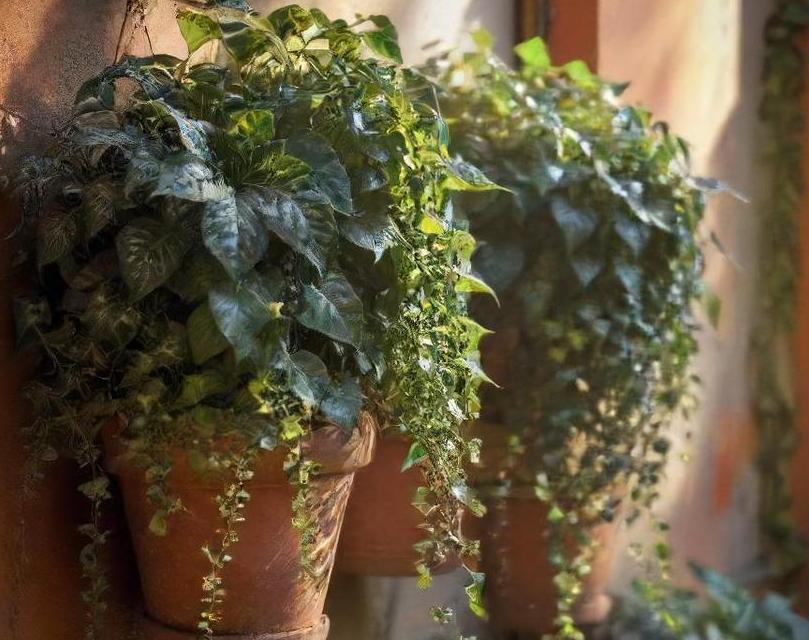
Variegated Natal Ivy is a member of the grape family, Vitaceae, native to tropical regions of Africa. It is characterized by its striking variegated foliage, featuring vibrant green leaves with splashes of creamy white or yellow. This ivy is prized for its trailing habit, making it an excellent choice for hanging baskets, trellises, or as a trailing accent in mixed planters.
The botanical name Cissus nodosa reflects its nodose or knobby stems, which are capable of clinging to surfaces for support. While Variegated Natal Ivy is a relatively low-maintenance plant, providing the proper care is essential for its health and longevity indoors.
Proper watering is crucial for the health of Variegated Natal Ivy. As a tropical plant, it thrives in moderately moist soil but is susceptible to root rot if overwatered. Here’s a guide to watering your Variegated Natal Ivy effectively:
- Frequency: Water your Variegated Natal Ivy when the top inch of soil feels dry to the touch. Depending on environmental conditions such as temperature and humidity, this typically ranges from once a week to every two weeks.
- Watering Technique: Use room temperature water to avoid shocking the plant. Water the soil evenly until it begins to drain from the bottom of the pot. Empty any excess water from the saucer to prevent waterlogging.
- Avoid Overwatering: Ensure proper drainage by using a well-draining potting mix and a container with drainage holes. Overwatering can lead to root rot and other moisture-related issues, so err on the side of underwatering rather than overwatering.
Monitor your Variegated Natal Ivy closely and adjust your watering frequency based on its specific needs and environmental conditions. Signs of overwatering include wilting, yellowing leaves, and a foul odor emanating from the soil.
Fertilization
Fertilizing Variegated Natal Ivy is essential for promoting healthy growth and vibrant foliage. However, it’s crucial to avoid overfertilizing, as this can lead to nutrient imbalances and damage to the plant. Here’s how to fertilize your Variegated Natal Ivy effectively:
- Frequency: Fertilize your Variegated Natal Ivy during the growing season, which typically spans from spring to early fall. Aim to fertilize once every four to six weeks.
- Fertilizer Type: Use a balanced, water-soluble fertilizer formulated for houseplants. Alternatively, you can use a slow-release granular fertilizer applied according to the manufacturer’s instructions.
- Dilution and Application: Dilute the fertilizer to half or quarter strength to avoid overwhelming the plant with nutrients. Apply the fertilizer evenly to the soil, taking care to avoid getting it on the foliage, as this can cause burns.
- Flush the Soil: Every few months, flush the soil with plain water to remove any accumulated salts from fertilizer buildup. Water the plant thoroughly, allowing water to drain freely from the bottom of the pot.
By providing the proper balance of nutrients through regular fertilization, you can ensure that your Variegated Natal Ivy remains healthy and vibrant throughout the growing season.
How To Plant Variegated Natal Ivy
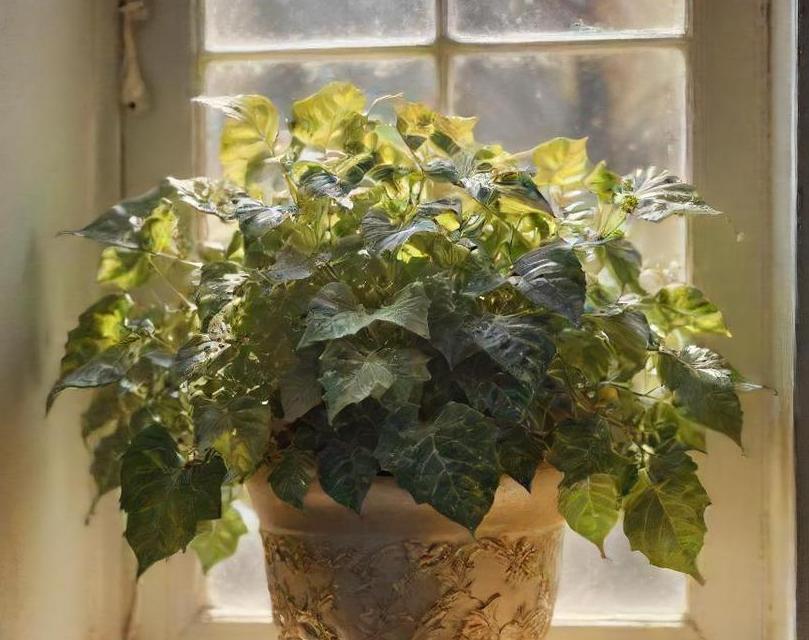
Whether you’re starting with a young cutting or a mature plant, proper planting techniques are essential for the success of Variegated Natal Ivy. Follow these steps to plant your Variegated Natal Ivy successfully:
Propagation
Variegated Natal Ivy can be propagated through stem cuttings with nodes. Here’s how to propagate Variegated Natal Ivy:
- Select Healthy Cuttings: Choose a healthy stem cutting with at least two nodes. Nodes are the small, protruding bumps on the stem where leaves emerge.
- Prepare the Cutting: Using clean, sharp scissors or pruning shears, cut the stem just below a node at a 45-degree angle. Remove any leaves from the lower half of the cutting to prevent them from rotting in the soil.
- Rooting Medium: Place the cutting in a well-draining rooting medium, such as perlite, vermiculite, or a mix of potting soil and perlite.
- Provide Indirect Light: Place the cutting in a location with bright, indirect light. Avoid placing it in direct sunlight, as this can cause the cutting to wilt or burn.
- Maintain Moisture: Keep the rooting medium consistently moist but not waterlogged. Mist the cutting regularly to increase humidity and prevent dehydration.
Potting
Once your cutting has developed roots, or if you’re planting a mature Variegated Natal Ivy, follow these steps to pot it successfully:
- Select a Pot: Choose a pot with drainage holes that is slightly larger than the root ball of your Variegated Natal Ivy. Ensure that the pot has adequate drainage to prevent waterlogging.
- Prepare the Potting Mix: Use a well-draining potting mix formulated for indoor plants. You can also add perlite or coarse sand to improve drainage.
- Planting: Place the Variegated Natal Ivy in the center of the pot and fill in the gaps with potting mix. Ensure that the top of the root ball is level with the surface of the soil.
- Watering: Water the plant thoroughly after planting to settle the soil and hydrate the roots. Allow any excess water to drain freely from the bottom of the pot.
Variegated Natal Ivy is a stunning and versatile indoor plant that can enhance any living space with its vibrant foliage and trailing habit. By providing the proper care, including adequate watering, fertilization, and planting techniques, you can ensure that your Variegated Natal Ivy thrives and flourishes indoors. Whether you’re a seasoned plant enthusiast or a novice gardener, Variegated Natal Ivy is an excellent choice for adding beauty and greenery to your home or office environment. With its resilience and low-maintenance nature, Variegated Natal Ivy is sure to delight and inspire plant lovers of all levels.
Pruning Techniques For Variegated Natal Ivy
Variegated Natal Ivy is a member of the Asparagaceae family and is native to South Africa. It is a compact perennial plant that belongs to the Chlorophytum genus, which comprises around 200 species. This particular cultivar is prized for its attractive foliage, characterized by creamy-white variegation that contrasts beautifully with the deep green of the leaves.
One of the key reasons behind the popularity of Variegated Natal Ivy as an indoor plant is its adaptability to a wide range of growing conditions. It thrives in moderate to bright indirect light, making it suitable for placement in various areas of the home, from sunny windowsills to partially shaded corners. Additionally, it is relatively low-maintenance, making it an ideal choice for both novice and experienced plant enthusiasts.
Pruning is an essential aspect of Variegated Natal Ivy care, as it helps maintain the plant’s shape, remove dead or diseased foliage, and promote healthy growth. Here are some pruning techniques to keep your Variegated Natal Ivy thriving:
1. Regular Trimming
Regularly trim the plant to remove any yellow or brown leaves, as well as any stems that appear leggy or overgrown. Use sharp, clean scissors or pruning shears to make clean cuts, as jagged cuts can invite disease.
2. Pinching Off Flower Stems
Variegated Natal Ivy produces small white flowers on long stalks, especially when grown in optimal conditions. While these flowers are attractive, they can divert energy away from foliage growth. Pinch off flower stems as soon as they appear to encourage the plant to focus its energy on producing new leaves.
3. Shaping
To maintain a compact and bushy appearance, consider shaping your Variegated Natal Ivy by selectively pruning stems. Focus on removing stems that are growing outward or crossing over others, which can result in a tangled and unkempt appearance.
4. Propagation Pruning
When propagating Variegated Natal Ivy (as discussed in the next section), pruning plays a crucial role. Trim the parent plant to encourage the growth of healthy, vigorous stems for propagation. Choose stems that are free from disease or damage and have at least two nodes for optimal success.
Propagation Methods For Variegated Natal Ivy
Propagation is an excellent way to expand your collection of Variegated Natal Ivy or share the joy of growing this beautiful plant with friends and family. There are several methods you can use to propagate Variegated Natal Ivy successfully:
1. Division
Division is perhaps the simplest and most common method of propagating Variegated Natal Ivy. To divide the plant, carefully remove it from its pot and gently tease apart the roots into separate clumps. Each clump should have its own stems and roots. Plant the divisions in individual pots filled with well-draining potting mix, and water thoroughly.
2. Stem Cuttings
Stem cuttings are another effective way to propagate Variegated Natal Ivy. Select a healthy stem with at least two nodes, and use sharp, clean scissors or pruning shears to make a diagonal cut just below a node. Remove any leaves from the lower half of the cutting to prevent them from rotting when planted. Plant the cutting in a small pot filled with moist potting mix, and place it in a warm, bright location. Keep the soil consistently moist until roots develop, which typically takes a few weeks.
3. Water Propagation
Water propagation is a simple and visually appealing method that allows you to observe root development firsthand. Take a stem cutting as described above and place it in a glass or jar filled with clean water. Ensure that at least one node is submerged in the water while the leaves remain above the surface. Place the container in a well-lit area, away from direct sunlight, and change the water every few days to prevent stagnation. Once roots have formed, transplant the cutting into soil.
4. Offsets
Variegated Natal Ivy produces offsets, or small plantlets, at the ends of trailing stems. These offsets can be gently removed from the parent plant and potted individually. Ensure that each offset has its own roots, and plant it in a small pot with well-draining soil. Keep the soil consistently moist until the offset establishes itself and begins to produce new growth.
Troubleshooting Problems With Planting Variegated Natal Ivy Indoors
While Variegated Natal Ivy is relatively easy to care for, it may encounter some common problems when grown indoors. Here are some troubleshooting tips for addressing issues that may arise:
1. Yellowing Leaves
Yellowing leaves are often a sign of overwatering or underwatering. Ensure that you are watering your Variegated Natal Ivy appropriately, allowing the top inch of soil to dry out between waterings. Additionally, make sure the plant is receiving adequate light, as low light can also cause leaves to yellow and drop.
2. Brown Tips
Brown tips on the leaves can indicate low humidity or excessive fertilization. Increase humidity levels around the plant by misting the leaves regularly or placing a tray filled with pebbles and water beneath the pot. Avoid over-fertilizing, as this can cause salt buildup in the soil, leading to leaf burn.
3. Leggy Growth
Leggy growth, characterized by long, thin stems and sparse foliage, is often a result of insufficient light. Move your Variegated Natal Ivy to a brighter location, but avoid placing it in direct sunlight, which can scorch the leaves. You can also prune the plant to encourage bushier growth and remove any leggy stems.
4. Pest Infestations
Variegated Natal Ivy is susceptible to common houseplant pests such as spider mites, mealybugs, and aphids. Inspect the plant regularly for signs of pest infestation, such as webbing, sticky residue, or tiny insects on the leaves. Treat infestations promptly with insecticidal soap or neem oil, ensuring thorough coverage of both the upper and lower leaf surfaces.
Conclusion
Variegated Natal Ivy is a delightful addition to any indoor plant collection, offering both aesthetic appeal and ease of care. By following proper pruning techniques, employing effective propagation methods, and troubleshooting common problems, you can ensure that your Variegated Natal Ivy thrives in its indoor environment. With its graceful foliage and adaptable nature, this charming houseplant is sure to bring joy and beauty to your home for years to come.
FAQS
What Is Variegated Natal Ivy?
Variegated Natal Ivy, scientifically known as Ceropegia woodii variegata, is a charming trailing plant appreciated for its small, heart-shaped leaves adorned with creamy-white or yellowish variegation. Belonging to the Asclepiadaceae family, this plant is native to South Africa and is commonly cultivated as a houseplant due to its low maintenance requirements and aesthetic appeal.
How Do I Care For Variegated Natal Ivy?
Variegated Natal Ivy thrives in bright, indirect light but can tolerate some shade. It prefers well-draining soil and should be watered thoroughly, allowing the soil to dry slightly between waterings. Avoid overwatering as it can lead to root rot. Regular pruning is beneficial to maintain its trailing habit and promote bushier growth. Additionally, occasional fertilization during the growing season can encourage healthy foliage.
What Are The Ideal Growing Conditions For Variegated Natal Ivy?
Variegated Natal Ivy prefers temperatures between 65°F to 75°F (18°C to 24°C) and high humidity levels. It is well-suited for indoor environments but can also be grown outdoors in mild climates as long as it is protected from direct sunlight and harsh weather conditions. Providing adequate airflow around the plant helps prevent issues such as mildew and fungal infections.
How Do I Propagate Variegated Natal Ivy?
Variegated Natal Ivy can be easily propagated through stem cuttings. Simply snip a healthy stem with several leaves and place it in a container filled with moistened soil or water. Keep the cutting in a warm, bright location, and roots should develop within a few weeks. Once roots are established, the cutting can be transferred to its own pot.
Does Variegated Natal Ivy Require Any Special Care During Winter?
During the winter months, Variegated Natal Ivy may benefit from slightly reduced watering to prevent waterlogged soil. It is essential to protect the plant from cold drafts and maintain stable indoor temperatures. Providing adequate humidity through methods such as using a humidifier or placing a tray of water and pebbles near the plant can also help counteract dry indoor air.
Are There Any Common Pests Or Diseases That Affect Variegated Natal Ivy?
Variegated Natal Ivy is relatively resistant to pests but may occasionally attract aphids, mealybugs, or spider mites. These can be addressed through manual removal, insecticidal soap, or neem oil treatments. Overwatering or poor air circulation can lead to fungal diseases such as powdery mildew, which can be prevented by ensuring proper watering practices and good ventilation.
Can Variegated Natal Ivy Be Grown In Hanging Baskets?
Yes, Variegated Natal Ivy is well-suited for hanging baskets due to its trailing growth habit. Hanging baskets allow the plant’s vines to cascade gracefully, creating an attractive display. When selecting a hanging basket, choose one with adequate drainage holes and use a lightweight, well-draining potting mix to prevent waterlogging. Hang the basket in a location with bright, indirect light for optimal growth.
